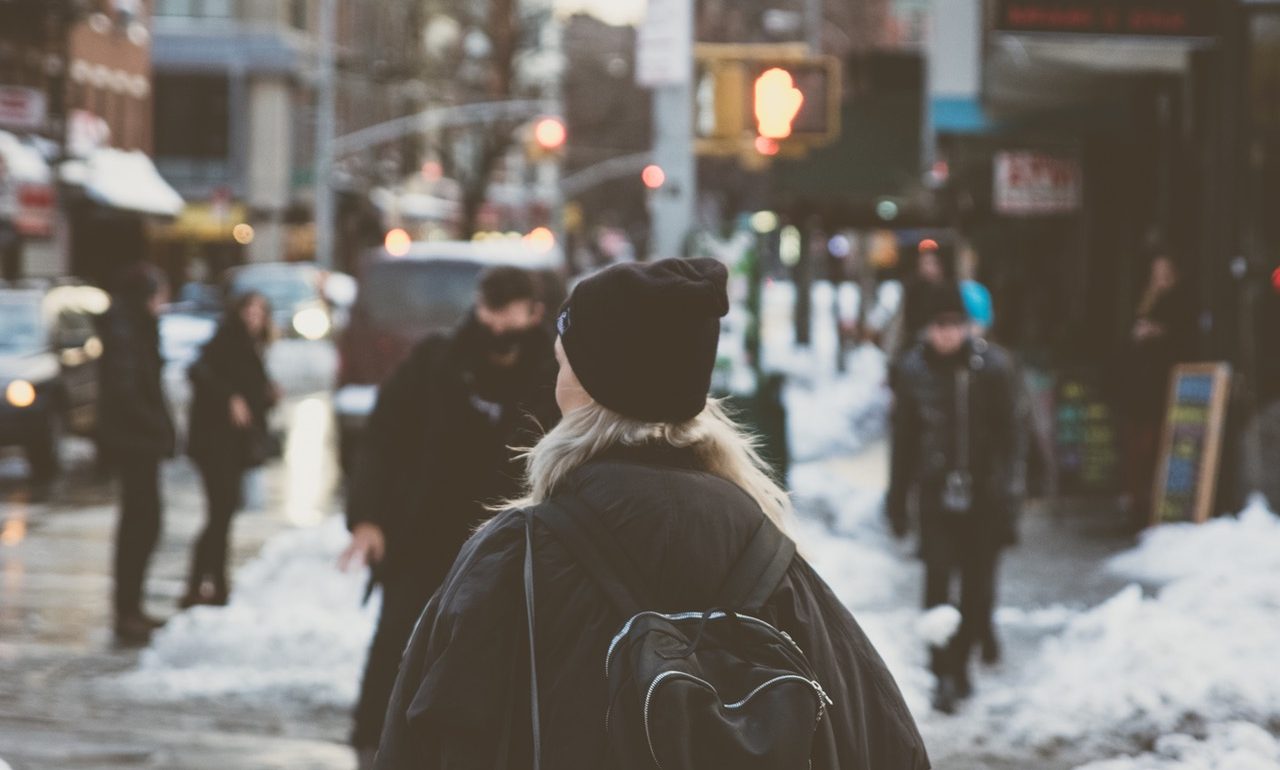TriTAG is pleased to release the results of our 2017 Winter Sidewalk Study. See our summary of our findings below, or read the whole report here.
The City of Kitchener manages sidewalk maintenance in winter by requiring adjacent property owners to clear municipal sidewalks of ice and snow. This has raised concerns over inconsistent sidewalk conditions and poor enforcement. In 2016, city staff presented Council with a report comparing complaint volumes under the present system with estimated complaint volumes based on the experiences of other cities that themselves take on the responsibility to plow all sidewalks.
The Tri-Cities Transport Action Group (TriTAG) was concerned by the reliance on primarily complaint volumes to assess the efficacy of sidewalk clearing, as that metric fails to tell us useful information about the desired outcome of sidewalk maintenance: walking mobility. Consequently, we recruited volunteers in early 2017 to record sidewalk conditions on specific streets in Kitchener (and one in Waterloo) on selected dates over a number of weeks. Volunteers counted sidewalks and street corners where clearing of snow or ice was insufficient to allow safe access by someone with an unsteady gait or who uses a wheelchair. We also tracked snowfall amounts several days prior to each count date. (Thanks to an early thaw in late February, we were only able to track the state of sidewalks between January 29 and February 16.)
We found that the majority of streets tracked had at least one sidewalk clearing compliance issue during the course of the study, and most had several compliance issues that would hinder mobility. Even during counts where there had been no snowfall for the previous three days, we observed an average of 13 potential obstructions per kilometre of sidewalk – or one obstruction every 77 metres.
Using the data we collected, we modelled the probability of encountering obstructions when walking various distances for 10 cm, 5 cm, and no snow accumulation in the previous three days. In all cases, the probability of being obstructed along a very short walk of 50 metres exceeds 50%. The probability of obstruction on a 160 metre walk, the average walking distance to access transit, is greater than 80% in all cases.
From these findings, we conclude that the way we leave sidewalk clearing up to adjacent property owners fails us, especially our most vulnerable. Consequently, TriTAG is recommending that Kitchener adopt metrics that assess the mobility impacts of its sidewalk policies, and that the city conduct a pilot program to more directly evaluate various sidewalk enforcement and plowing options.



I think that exploring different options is a great thing. Clearly, the status quo is not working, and reasonably clear sidewalks is a critical issue for people’s mobility. And we need something more systematic to make sure that sidewalks are passable as soon as possible.
I would contend that the basis for such a system still remains as “responsibility of property owner.” Property owners need to keep their own property passable, so expecting them to clear the public sidewalk is not an unreasonable civic duty. Also, property owners actually have the potential to clear sidewalks more quickly (before the snowfall is even done, or multiple times per snow event), more completely (shovels often get closer to the concrete than a tractor-mounted plow can), and of course more cheaply for the city.
I am very interested in creative solutions when this potential is not realized, which of course is quite frequent. And even one uncleared section is the weak (or broken) link in the chain, creating an impassable barrier. Is it pro-active enforcement? Street captains? I could see starting with city crews targeting corners after the plows have gone by, these are often the biggest impediments.
I agree wholeheartedly that cities should proudly keep sidewalks accessible to all. Several comments:
1) There has recently been some digging up of a sidewalk, halfway between Bleams and Beasley Sts., on Homer Watson Blvd. The sidewalk has been unploughed, with a sign up saying to “Please Use Other Sidewalk”. What irony, as there is no sidewalk on the other side. Homer Watson is far too busy a street to walk on. No safe options here.
2) My partner and I are diligent to keep our sidewalk bare every winter. However, it is an old, narrow, one-way street, with no boulevard between the road and the sidewalk. The city uses huge road ploughs made for suburban streets to clear the road with. After we’ve cleared our sidewalk, the plough comes along and dumps compacted boulders of road snow and slush right back onto our sidewalk. This is a definite dilemma, especially for seniors and others who cannot shovel these much heavier objects. This should be the city’s responsibility.
3) Thanks, TriTAG and others, for raising awareness of this very important topic! We need to give options for people other than to sit in cars and buses. Let’s get active and stay safe!